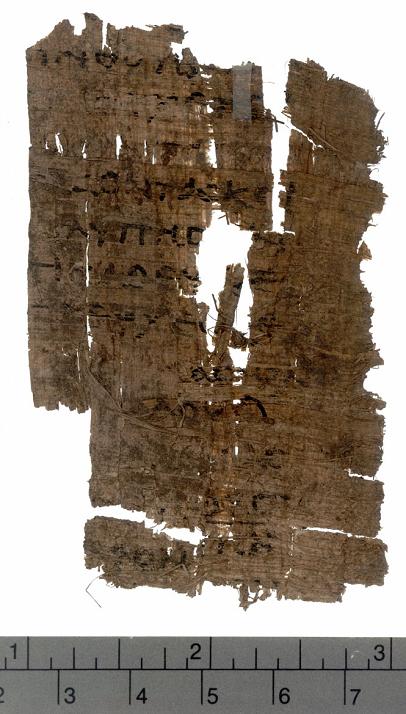| Change to Book/Chapter View |
|
|
|
Translation process is ongoing. For current status see details |
|
|

Papyrus 69 Date: Middle Third Century A.D. Discovered: Egypt Location: Oxford, England; Ashmolean Museum Contents: Luke 22:41, 45-48, 58-61
Luke 22 41 He
was withdrawn from them about a
stone’s throw, and he knelt down and prayed,
45 When he rose up from his prayer, he came to the disciples, and found them sleeping, put to sleep because of grief, 46 and said to them, “[2]Why do you sleep? Rise and pray that you may not enter into temptation.” 47 While
he was still speaking, a crowd appeared. He who was called Judas, one of the twelve, was leading them. He came near [..] 58 After a little while someone else saw him, and said, “You also are one of them!” But 59 After about one hour passed, another confidently affirmed, saying, “Truly this man also was with him, for he is a Galilean!” 60 But
Peter said, “Man, I don’t know what you are talking about!” Immediately,
while he was
still speaking, a rooster crowed. 61
[1] The critical text also omits verses 43-44. This manuscript may be unique in also omitting verse 42. [2] The papyrus has a gap allowing about four letters before the word “Why,” implying there originally was another word there. [3] It is uncertain what is written here because the papyrus is missing, but since the manuscript has Peter turning rather than Jesus, I assume that Jesus is what he looked at. |
How to read these pages: • The
translation to the left is based on the World English Bible. Words in regular
black font are words in the manuscript matching the Majority Text for that
passage. • Words
in italics cannot be seen in the manuscript, since the manuscript is
fragmentary. These words are supplied for readability by the World English
Bible translation. • Words
present in the manuscript but with some letters unreadable or missing are in blue
like this: blue. One Greek word often is
translated into multiple English words, and when this occurs, all the English
words are in blue. • Words
present in the manuscript but with spelling or trivial word order differences that do not affect the
meaning are in green like this: green. • If
the manuscript is different from the Majority Text, words in the Majority
Text that are missing from the text of the manuscript are marked through in red
like this: • If the manuscript is different from the Majority Text, words in the manuscript that are not in the Majority Text are underlined in red like this: new words.If the manuscript differs from the Majority Text yet matches another well-known text, this is noted in the footnotes.
|
